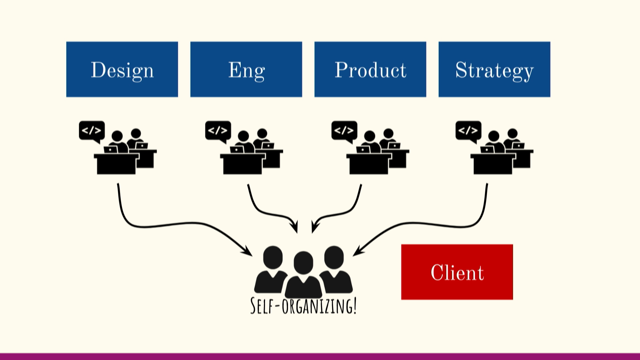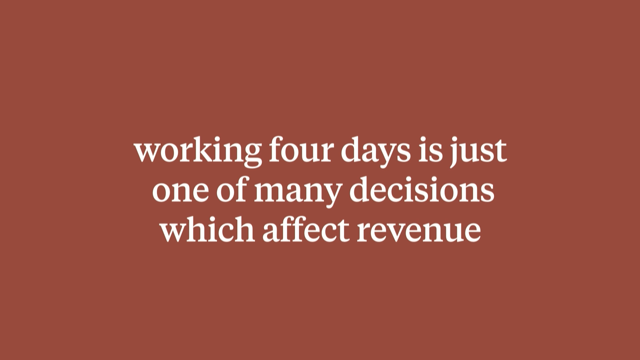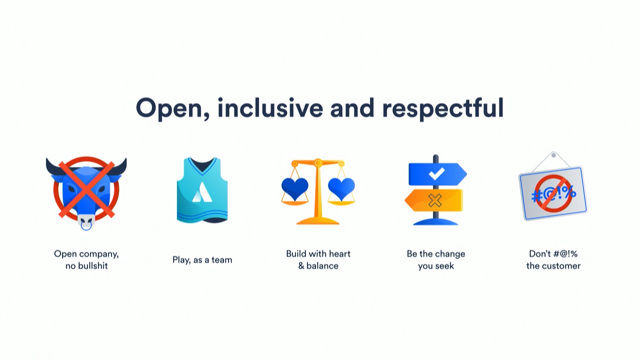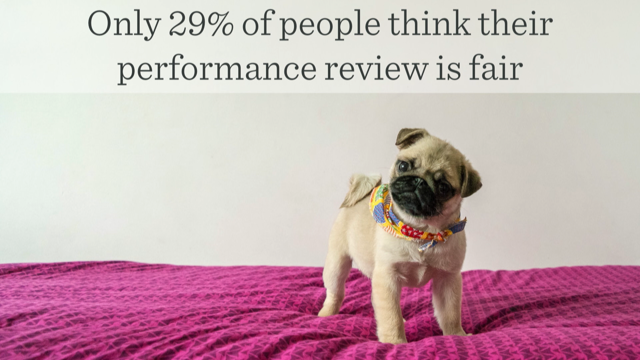Getting to Resilience

(upbeat music) - Thank you very much, Emma.
I went and researched my college background from 25 years ago, so that's wonderful to have. So, as you can tell, I'm an American and I like to think of myself as a patriot, and I was one of several hundred people who joined a wave of technologists going to the federal government, following the disastrous launch of the healthcare.gov website.
The parachutes in this image are intentional. A lot of the people doing it thought of themselves as heroes, and that rescue mode of that first call out to the private sector informed a lot of the culture that you find inside the two agencies that were founded by President Obama in 2014. The United States Digital Service and 18F.
So what to start with talking about a very difficult day to be a federal technologist in the US. I've been around the block a few things.
Been through the layoffs after the boom of 2000 ended and the ones after the 2008 financial crash and I've never seen a group of people more dismayed in the workplace than on the day following the election of our current president.
What made this more interesting, in the cosy San Francisco office of 18F, in the GSA building with its marble halls, was that there's a law called the Hatch Act of 1939, which says that an American federal civil servant may not discuss partisan politics while in a government building, even wearing a government badge, in a government vehicle, while carrying anything marked as government documents. So a whole bunch of people who had brought themselves over from the San Francisco start-up, or big company tech scenes, sitting in an office, looking at each other with a whole lot of questions about the future of this enterprise to do technology in the federal government not able to say a word to each other.
And eventually, by sort of afternoon coffee hour, we had realised that we could take our badges off and walk outside the building and stand out in the plaza and start to talk about how are things going to be different now.
Will we even continue? This was an enterprise aligned with a friendly, a popular administration, an administration that was younger by quite a bit than many presidential administrations are, that was really interested in bringing better technology to America as a way to restore some of the trust in government.
So there had been a theory based on the rescue of healthcare.gov, when we need them, get some of the best people.
You know, all the great talent from Silicon Valley. Get them in there.
They just need a great work environment.
And we just need to set them free to do what they do best, and we'd recruited a whole raft of people, we were more than 200 of us at the time of that election who had come in, feeling that they were going to move over, bring the practises that they were used to in whatever their private sector workplaces might have been, be allowed a lot of autonomy inside one of the most hierarchical and largest organisations in the world that employs about two million people, if you don't count the soldiers.
And they were going to, by doing all of that, have a ginormous impact.
They were going to be able to kind of pull their tickets from a well-designed ticket system, get them done, not be distracted by things like meetings, because of course that's part of a good environment. And we were all going to have a transformation of government and its role.
So, I'm gonna say that we had a pretty generic conception of what a great work environment looked like. And it was based on a lot of things that were pretty surface.
Yay, everyone should have a nice computer of their choice and we should have a lot of food around, and ideally we should have access to Slack because this was, when I joined about 2016, it's the height of the excitement about Slack replacing e-mail and fixing all our communications.
You should be able to choose your projects and you should be able to spend some time on just big ideas and whatever you want.
And probably your manager, in this type of work environment, should be focused on your career path and making sure that you are going forward into a future that really excites you.
And the one that was kinda quiet was, you know, clear alignment around the goals and we had that at a really big level.
There should be better technology for the government. One of the interesting things with what Don said earlier is that's a very hard proposition to falsify. Nobody really disagrees with that.
You can't have a really good argument with that. No, I think the United States government should have lousy technology and people shouldn't be able to access it.
Not a popular position, not a useful one to argue. Now we couldn't do all of this by any means. We really couldn't even provide free coffee to people if you look at the snack bar piece. So, free coffee, free bottled water, all those things are run as clubs in a government space, where you put your money in the kitty and you can participate in the water cooler, you can participate in the coffee machine, et cetera. And we were part of the General Services Administration. Raise your hand if you know what that is.
Awesome.
Okay, this is gonna be a little bit geeky. (laughs) So the General Services Administration was formed out of six other government agencies in the 50s to help the United States government do a better job of things that it manages, like buildings and fleets of cars and purchasing agreements. And as such, it does not receive any appropriations from Congress like most United States government agencies do and that means that everything it does must be cost-recoverable.
Doesn't get any money, has to earn everything it spends. So we were under particular scrutiny, always, even before the change of administration as far as, were we doing that, were we recovering all of our costs.
We wanted, in some ways, to act like a familiar, well-funded start-up environment but that wasn't reality.
And on November 9, reality started to hit us. We were a heavily matrixed organisation.
We were designed based on a structure that had been favoured probably in the early 2000s. So we had your typical teams that people were housed in for their primary management, design engineering, product, and strategy, and then quietly off in the corner, one called acquisitions that actually helped the government buy technology.
Matrix structures, in my experience, are pretty difficult to run, but they can be done well. This was a particularly hard-edged matrix where people were closely within their team and didn't spend a lot of time talking to people from other ones.
And you might know how this runs.
From each of those, we assemble people into project teams. So unlike the United States digital service, which runs out of the White House and is sent to you at the president's priority, so you get a call from the White House that says, okay 18F, we don't think you're doing a good enough job with gun background checks.
We're sending a team.
Okay VA, you've got a giant backlog of claims. We're sending a team.
We at 18F were set up as an internal consultancy. So we had to sell our projects, people had to buy them. We had to not compete too much with people from private industry who did similar things.
And we set ourselves up largely as a design and build shop. So we wanted to have self-organizing, agile teams of the sort that would be very recognisable to all of you who are from Don's presentation about the well-working ones that outlast the endless morning. Here's some of the questions you run into with a heavily matrixed organisation, even in the best case with a friendly administration. What happens with performance? It's not that hard to solve, but in an environment where everyone has been recruited because they're top private sector talent, and where they've been asked to come in and join a mission where they're certain to have impact, it's a little bit harder to talk about, actually, your skills at front end design are not quite working in this particular setting. Can we help you out? When we recruited people with a call saying, again, we want you amazing people to come and join us in this incredibly important mission in the government with this heritage in a rescue mission where people are heroes.
Come on over and we'll give you almost free reign to do whatever you want and you'll make a difference. When we did that, did we get the right kind of people who, when the administration unexpectedly changed to one that was very, very different rather than a little bit different from the one that we had, did we have people who could withstand that? Did we have people who could align with federal civil servants' culture of neutrality? Which is one of the things that enables the bureaucracy in its very best sense to withstand and thrive and to be resilient to whatever happens with the elected political leaders.
What kind of practise actually works in a government environment where, well there's a few agencies that are still using Lotus notes. There's a lot of agencies that have a database that Oracle built for them sometime in the 90s that they're still running a website off of. There's a lot of agencies that are really suspicious of the cloud.
We will now pause for technical difficulties. Okay, cool. (laughs) We hadn't had to really think about what kind of practise suited our situation. We just knew that good technology practise could build good technology and the government needed good technology.
We didn't worry particularly about whether practise was consistent, because we knew that we had good people who could do good practises, and again, good practises lead to good technology and the government needs good technology.
And billability, which if you've ever consulted, anybody had to make a 85% billability target in your life? I'm sorry.
How about 90? (laughs) No, okay, good.
It's very hard to make a high target of demonstrably billing to actual projects, something like 85 or 90% of your time, and this was something that had always gotten attention but became more urgent as we moved into the new administration.
So.
On January 20, 2017, when the new president was inaugurated, we'd been told to expect whatever happened, whichever candidate won, that things would be discombobulated for a while.
And they were, and they've stayed that way. And we had people in places like the Department of Justice the day that Director Comey was fired, seeing the reactions of the federal civil servants who may have spent 30 years of a career there, and how they dealt with their dismay and how they also kept on going.
We didn't know what kind of thing we might be asked to do. A lot of people were quite frightened that we'd be asked to build a database of people by religion.
Thank goodness that never happened.
A lot of us took a little time to write down some things that we might not have thought of before that we would know were things that would be over our line and that we might be able to say an absolute hard no to, no matter what.
At the same time, it started to seem more urgent that people of good faith were part of the government and were helping the well-intentioned public servants who'd been working on government technology sometimes for decades to do the right thing for the people and to do the right thing in this environment. So we go forward.
During the first year of the new administration, 18F, this strangely named little office, was combined with another former innovation office to make the Technology Transformation Service. Very big words.
Still an organisation of 300 and some people. And then a little later, the Technology Transformation Service was merged into the Federal Acquisitions Service, another part of the General Service Administration that explicitly focuses on helping the federal government purchase things, including technology services.
And one of the most metric-driven, number-driven in a very old school way, agencies in the federal government.
And then we got merged with a new innovation effort by a new appointee called Centres of Excellence. This person came from IBM and that was intended to embed people inside of government agencies. We had ongoing turmoil and we had a relatively brilliant, young, idealistic staff, some of whom had had most of their career since 2008. Hadn't been through a period of layoffs.
Hadn't been through a period of downsizing. Hadn't been through a period of changing goals. Burnout became extremely common.
I was burned out.
Everybody I knew who had a leader management role was burned out.
And as someone with management experience, and who had been in the civic tech sphere for a while, I decided to apply for a Chief of Staff job about six months after the administration change. It was the first time we'd had one and when I was offered the position, I said, I will do it under the condition that I get two things. One of those was to spend 10% of my time on open office hours, just so that I could talk to everybody in the organisation and start breaking some of those silos. And the other one was to offer official sponsorship to communities of practise that we had built that were disparaged somewhat and thought of as, because of our billability requirements, side projects. Waste of time, why do the front end developers need to get together and talk separately and talk about practise? Isn't that just the sort of thing that we can't afford to do in this environment? That wasn't my view, so I asked for those two things and I gained that point.
At this point, some of our past decisions came back to haunt us.
I kind of have to say happy Halloween because I'm American, I'm from San Francisco where it's basically a civic holiday, so happy Halloween everyone, I hope you get lots of candy. Some of the ways that we had continued the rescue theme and continued the culture of anything we do is probably gonna work, or at least it's gonna work well enough that it's gonna be better than what we have.
We had to make some shifts.
One of the biggest, have you ever worked somewhere where there was an SMT, a senior management team, that called itself by those initials? Constant red flag to me, right, if people start talking about, oh the SMT's meeting, the SMT is coming up with a new strategy.
Okay.
Nearly always, when they're using these initials to talk about it, there's a group of other people they are not talking to and that's the front line managers.
It's like, well this is for the senior managers. Senior managers are important because they have upward perspective and broad perspective, but for me, in healthy organisations that I've worked in, some of the very most important people are the people who have the title of lead or supervisor or manager who work with some small group of individual contributors somewhere between four and 10 people.
We had those roles at 18F, but we had not been using them to affect culture. They were a nice promotion that people could get. They were useful, they delivered peoples' reviews, although they didn't sign them, but they didn't talk to each other across the silos of the discipline groups.
And in fact, people would get a little bit mad if their lead in design talked to their project partner's lead in engineering about how the partnership was going.
That was sort of seen as breaking the autonomy of the team.
These people knew more about what was going on in the organisation collectively than anyone else. My initial proposal, to get them all together to meet, was heralded as, why are you asking us to come to more meetings? And I said, I did what Don said you shouldn't, I said please.
I must have too many environmental settings on here. Please do me a favour, come to this one, you need to meet your peers.
And we got people together and we did a simple madlib, we said what's your name, what are your pronouns, what city are you in, because we would see our friends on screens and not even know what city they were working in. We were really heavily distributed, so your name, your pronouns, your city, what's your favourite thing to eat for lunch at your desk? And what are you working on? And we just started to create a community among the people who knew more about what was actually going on with every single project, as long as they talked about it collectively, than anybody else in the organisation.
So we called it the greater management team. (laughs) And it started to become, after that first meeting where people said, oh wait, you're working with so-and-so? Well I heard something really odd about how that's going on the project with the Department of Labour.
Can we just have a quick chat offline? So when I think about this and what a cultural hack it turned out to be for us, I think one of the principles there is that the people with the information have to feel comfortable to talk to each other. And they have to feel like they're not betraying someone who's in their group if they talk about their performance with someone else.
We don't want to be judgmental about performance, but we want to be always honest about performance, and we want to be able to talk about performance as a group.
So if someone is a wonderful designer, but they have a really difficult time talking to clients about it, we can manage that.
We can help them get better, we can help put someone on the team who really has that other skillset, but if we don't talk about, we can't do anything about it, and we start to displease clients and that starts to put us in a position of losing billability and losing some of the things that allow us to accomplish our mission, especially under an administration that may be hostile to what we're doing in the first place. Conversations started to happen across the org and they started to become a group where suddenly, I went to about four of the first meetings and I didn't need to go to them anymore.
They started self-organizing.
I heard about people talking to each other. They brought information to the senior management team of the senior management team, which I refuse to allow them to call the initials anymore, they hadn't had before. It allowed us to understand better what we were able to do, what our capabilities were, and how we were serving our clients.
We had communities of practise as our flat organisation, and these were not just tied to design, engineering, product, and strategy. And we had a whole bunch of different varieties of them. And people were allowed to meet with the community of practise a half an hour a week. Again, if you're trying to meet that 85% billability target, and you've gotta answer your e-mail, attend at all hands and attend a group meeting, you're starting to cut very close to compromising that billability target.
So people can meet with them a half an hour a week. They were exclusively for 18F, for our little organisation, and then there were larger, government-wide communities of practise that were run on listservs, which people thought was kind of an old-school way to do things.
And all of this was considered side projects. So we standardised them, and as sponsor, I made the leadership competition for each of these communities for practise, an open competition like we would have for lead role. We asked that every single community of practise be open to every single person at least within the technology transformation service with our close partners that every single community of practise must have either an open Slack channel or an office hours period weekly where they answer questions.
So we were not always in a position to staff a user researcher to every project that needed user research.
However, we could tell everyone that they could go and talk to the research community of practise and get good advice on what to do.
And we asked our official communities of practise that had designated leaders that had been competed to advise management on the practise they supported. Now that meant that, if someone else wanted to publish a loud blog post in contravention of the practise that we really thought was best within a government space, we empowered those leaders to say, we need to talk about this.
We need to align this.
And we need to have those conversations.
So much of this is about more clarity and more conversation between different levels, different parts, and different pieces of the organisation under difficulty.
Eventually, the hiring freeze lifted into 2018, and we got to hire people again.
And we looked at what we had learned, as we had lost close to 35% of our organisation in the first year plus of the Trump administration. And realised that we hadn't been very honest in our initial hiring postings.
We were not serving ourselves, the government, or our employees by signalling that we had a sort of free-for-all start-up environment inside the government, where they could just come and do what they might do at Google and it would work. So we changed our profile for hiring and we wrote up new job descriptions for things like a consulting engineer.
And it didn't just say you should be an excellent engineer, it's a collaboration, has to be a top priority for you.
And we mostly can't hire new juniors.
We love you, but we mostly need people whose skills are not gonna be called into question by a government person with 25 years.
We need people who make colleagues of clients. We need people who have really strong opinions and we need people who are excited to consult, which is what we do.
What we do is we consult, we coach, we help. Yes, we build things, but we build things with our clients. And we started to hire people who were much more resilient to the bumps and bounces, and sometimes the really major jolts that happened to our organisation, as we got deeper and deeper into this new administration. So, resilient organisations, in difficult times, hire people with full transparency as far as what they're going to encounter and what they need to bring. They talk about people's performance openly with the people and respectfully with each other, and especially at that front line layer of management. They offer a great deal of empowerment.
And perhaps the biggest one: they open their practises. They don't go off in a corner and do secret things and come back and present to you what they built. They open their communities of practise where they're talking about how to do research or how to do engineering, or how to bring things to the cloud.
And they make their clients part of that.
And that means that their clients then advocate for them. And that's especially important inside of a government. And so, the last thing I wanna close with, I left the government in May of this year.
People always ask me, did you work for President Trump? And how was that? And I say, I did.
There's a lot of ways you could put that though. And I think that all of my colleagues there, as they grew into this work and a hostile administration, as they grew into being more resilient, would focus on the last two of these.
I worked for the federal government.
I worked for the American public.
I helped us all figure out how to do our best through being a strong organisation.
Healthy institutions can withstand incredible disruptions. Thank you.
(applause) (upbeat music)















